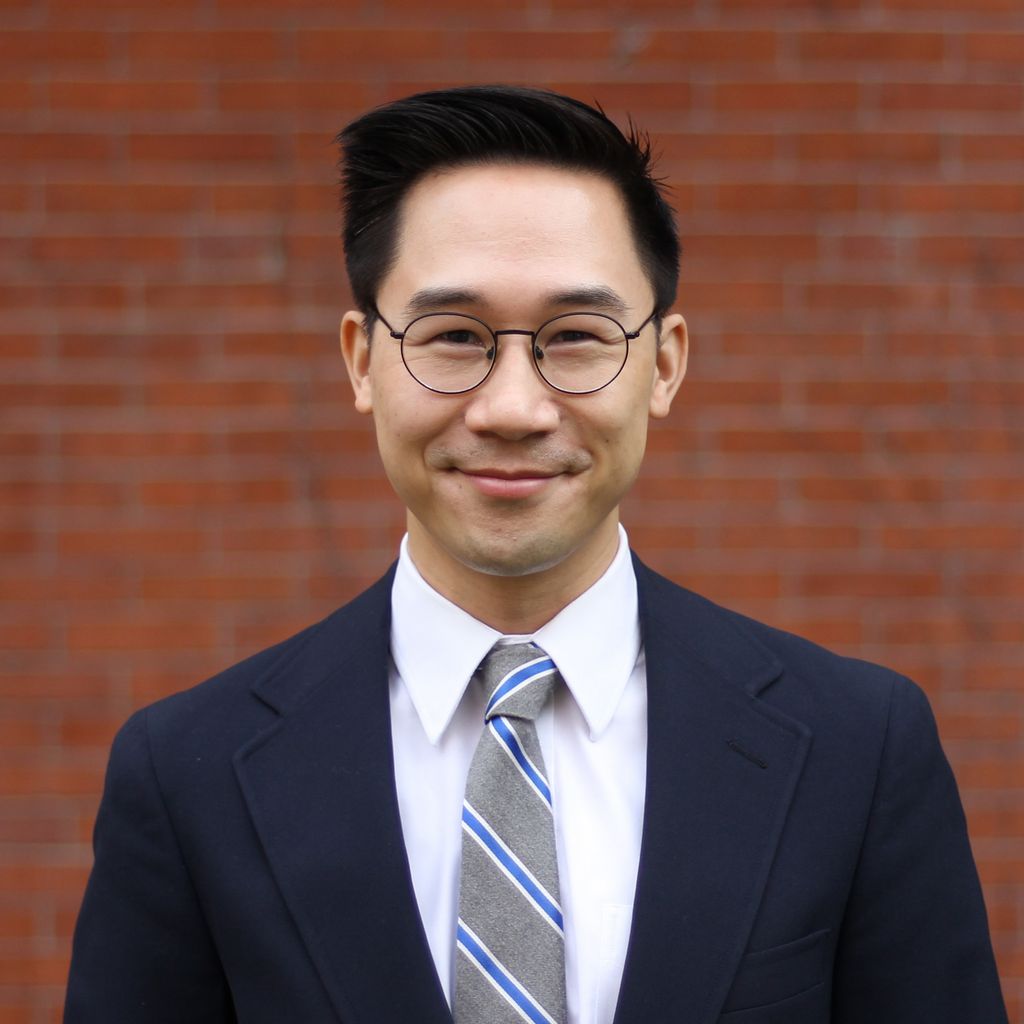‘No Community Is Healthy Until All of Its Constituents Are Healthy’.

‘No Community Is Healthy Until All of Its Constituents Are Healthy’
As Pride Month begins, SPH faculty discuss the wave of anti-LGBTQ+ legislation and rhetoric that is sweeping across the country and how we can best support the LGBTQ+ community during this moment.
On the first day of his second term, President Trump signed an executive order that directed the federal government to only recognize two sexes, male and female. This move was just the start of an aggressive series of federal directives, policies, and rhetoric that take greater lengths than the first Trump administration to limit the rights of the LGBTQ+ community and erase the existence of transgender people in public life.
The January 20 executive orders also ended the use of the gender-neutral “X” marker on passports, eliminated gender-affirming care for people under 18, as well as incarcerated transgender individuals, and restricted federal funding for programs that support what the administration calls “gender ideology,” or the widely accepted idea among the medical community that gender falls along a spectrum.
In subsequent months, the administration has terminated diversity, equity, and inclusion (DEI) programming and references in federal jobs and contracts, and in schools, banned transgender people from serving in the military and transgender women from competing on female sports teams, and rescinded a host of Biden-era policies that supported DEI initiatives. More than $125 million in grants that supported LGBTQ+ research have been cancelled, including projects that focused on prevention of and treatments for HIV and other sexually transmitted diseases, cancers, youth suicide, and other health issues that disproportionately affect LGBTQ+ populations.
These actions—occurring at the federal and state level—will only exacerbate the well-documented health challenges that LGBTQ+ people face. Copious data show that this population disproportionately experiences adverse physical and mental health outcomes, including higher rates of depression, stress, suicidal ideation, eating disorders, HIV and other sexually transmitted diseases, and cancers than heterosexual people. LGBTQ+ people also encounter high rates of discrimination in and barriers to healthcare. Denying or delaying access to gender-affirming care, particularly to transgender and gender-diverse youth, magnifies these health disparities and reinforces long-standing stigmas. Studies show that providing gender-affirming care to youth who seek it can substantially improve their mental health and substantially reduce risk of suicidality.
The latest wave of targeted discrimination is causing deep uncertainty and alarm about the health and safety of the LGBTQ+ population in the US and abroad. Many of these actions are being challenged in court, including two significant cases that the Supreme Court will consider in the coming weeks, on whether Tennessee can uphold a ban on gender-affirming care for minors and whether parents can request that their children be removed from school lessons featuring books that include LGBTQ+ characters.
As we mark Pride Month this June, SPH faculty reflect on these current challenges and how public health can support the LGBTQ+ community.
Q&A
with Allegra Gordon, Kimberly Nelson, Sarah Lipson, Kevin Nguyen, Carlos Rodriguez-Diaz, and Sophie Godley
According to multiple polls, more Americans support policies that protect transgender people from discrimination in jobs and housing than in previous years, but both Republicans and Democrats have also become more supportive of policies that limit other protections, such as healthcare coverage for gender-affirming care, and using restrooms and participating in sports that align with gender identity, rather than sex at birth. What may be contributing to this shift in public opinion?

Allegra Gordon: As an LBGTQ+ community member and youth health equity researcher, I am reassured when I see that the majority of Americans continue to support policies that prohibit gender-based discrimination in key settings like housing and the workplace. Research has shown us that anti-discrimination law not only has economic and social benefits, but can also improve mental health and well-being for young people.
That said, it is undeniably disheartening to see these increasing levels of support for discriminatory policies that seek to block trans people from accessing healthcare, sports, bathrooms—basically, from accessing resources that are fundamental to everyone’s health and human rights, cis and trans people alike. How to think about these trends? I have been turning toward trans scholars and others who have been calling for us to understand the current anti-trans climate through moral panic theory. This idea, coined by sociologist Stanley Cohen in the 1960s, has been helpful in better understanding all kinds of historical events from the Salem witch trials of the 1690s to the “satanic panic” of the 1980s. I find this definition from Goode & Ben-Yehuda very helpful:
“In a moral panic, the reactions of the media, law enforcement. politicians, action groups, and the general public are out of proportion to the real and present danger a given threat poses to the society. In response to this exaggerated concern, “folk devils” are created, deviant stereotypes identifying the enemy, the source of the threat, selfish, evil wrongdoers who are responsible for the trouble. The fear and heightened concern are exaggerated, that is, are above and beyond what a sober empirical assessment of its concrete danger would sustain.”
This definition aligns closely with what we are seeing right now if you take even a passing look at current anti-trans political rhetoric and the kinds of misinformation that are being propagated on social media. Moreover, recent research backs this up.
This framework also raises the question of what interest groups stand to gain from the moral panic. How do social media platforms, which have been shown to use tactics to increase engagement—and thus revenue—through privileging more provocative content in their algorithms, contribute to fanning the flames of this moral panic? What responsibility does legacy media have to counter, rather than exacerbate, misinformation about trans youth? What is the role of public health in a moral panic, such as during public fear-mongering around HIV/AIDS in the 1980s? Trans activists, historians, and other scholars are leading the way in this thinking. I hope public health can be part of the conversation about finding ways to best address these troubling trends in public opinion—this moral panic—which is moving us farther away from, rather than towards, the loving, just society we need to truly improve the public’s health.
If the Supreme Court upholds the constitutionality of the Tennessee ban on gender-affirming hormone therapies, how might this ruling affect transgender healthcare across the nation? Would you expect similar bans to be enacted in other states?

Kimberly Nelson: The Tennessee ban, if upheld, is likely to decrease access to gender-affirming care for youth across the nation in multiple ways. First, state laws interfering with medical practice tend to spread to other states, as recently illustrated by state abortion restrictions. In that context, state legislators took instruction from other states’ abortion laws, often enacting the same regulations before adding new ones. This same effect is likely to be seen if the Tennessee ban is upheld, where other states will use the Tennessee law as a template for their own gender-affirming care bans. Thus, if the Tennessee ban is upheld, gender-affirming care is likely to be banned across an increasing number of states who adopt the Tennessee law as a model.
Second, laws like the Tennessee ban tend to have a chilling effect on medical practice, even in states that do not have such bans in place. We have already seen this effect, where clinicians have exited practices that provide gender-affirming care even in states that have not passed restrictive legislation. This would serve to further restrict access to gender-affirming care for youth, even in states without bans in place.
Lastly, there is an effort in the current administration to develop federal laws and regulations that ban gender-affirming care. If the Tennessee ban is upheld by the Supreme Court, it is possible that will create a template for a nationwide ban on gender-affirming care.
A leaked budget proposal earlier this spring indicated that the Trump administration may be planning to cut a subnetwork of services for LGBTQ+ youth who utilize the 988 Suicide & Crisis Lifeline. What are these specialized services, why are they crucial, and what stands to be lost if they are cut?

Sarah Lipson: The specialized services for LGBTQ+ youth under the 988 Suicide & Crisis Lifeline are vital mental health resources tailored to the unique needs of a vulnerable population. For some, these services represent the only accessible mental health support. Cutting these services removes a critical safety net for some of the most at-risk young people. Through 988, these services include dedicated crisis counselors trained in providing affirming support and with knowledge of issues related to family rejection, bullying, and discrimination, all of which are risk factors for poor mental health and suicidality among LGBTQ+ young people. Tailored services are crucial given the disproportionate risk of mental health problems in LGBTQ+ populations, the systemic barriers this population faces when trying to access affirming care, including fear of discrimination, lack of local resources, and/or lack of familial support. Without trained, affirming crisis counselors, LGBTQ+ youth may not reach out at all—or may receive inadequate, even harmful responses that worsen their distress and erode trust in mental health systems moving forward.
House Republicans expanded language in the GOP budget legislation to prohibit gender-affirming care to Medicaid recipients of all ages, rather than to people under 18 only. How might this legislation affect LGBTQ+ health more broadly, even beyond gender-affirming care?

Kevin Nguyen: Medicaid plays a crucial role in providing health insurance coverage for low-income LGBTQ+ people across the country, and in some states, this has included providing access to gender-affirming care. For this reason, any proposed Medicaid legislation that limits or restricts access to medically necessary care will have negatively impact the health and well-being of LGBTQ+ people, who disproportionately report Medicaid coverage. More broadly, having health insurance coverage can provide financial protection for low-income people and free up other household funds. There is evidence, for example, that expanding Medicaid coverage can reduce food insecurity and housing instability. Limiting access to Medicaid coverage may therefore also have downstream repercussions on access to basic needs for LGBTQ+ people.
The massive federal funding cuts to LGBTQ+ health research abruptly interrupted and ended studies on HIV and other STIs. How will this loss affect progress in prevention, diagnoses, and treatment for these diseases?

Carlos Rodriguez-Diaz: LGBTQ health is health for everyone. Everyone deserves the same access to quality healthcare as anyone else, as it is fundamental to be healthy and enjoy life. This means equitable access to preventive care, diagnostic tests, and treatment for a wide range of conditions, including those related to specific needs based on our sexual orientation and gender identity. The restrictions on LGBTQ+ rights affect the well-being of everyone because no community is healthy until all of its constituents are healthy. LGBTQ+ individuals have been historically underserved due to discrimination and stigma. A healthy America must prioritize the health of everyone, and that includes providing services according to individual needs. Hence, LGBTQ+ people should be able to receive the services we need, and policies should be in place to promote and protect the health of everyone, including LGBTQ+ populations. Halting resources for LGBTQ+ health research is impacting our nation’s ability to innovate and improve the public’s health. It is counterintuitive for a healthy nation to deliberately limit the resources to conduct health research with populations for which we have ample evidence need prioritization in the development of culturally congruent health interventions.
Anti-LGBTQ+ legislation and sentiment have increased over the last several years, but does this moment feel different? How can people best support the LGBTQ+ community?

Sophie Godley: There is no question that this current moment feels awful with the seemingly endless barrage of bad news for LGBTQIA+ people—specifically around our health, safety, and wellbeing. The targeting of transgender people is particularly cruel and dangerous. I don’t know if it helps or not to hear this, but for me, this moment is also eerily familiar. When I was working in HIV/AIDS in the early 90s and in adolescent sexual health in the early 2000s we faced similar attacks, and similar nastiness from elected officials. I want us to honor and remember the fights that have come before—protests, disruption, activism, and working together to meet the moment. We can, and we should, fight back now just as we did then.
Better yet, let’s learn from those who fought on the front lines of the HIV/AIDS crisis, the Harm Reduction Movement, the original fighters for LGBT humanity and equity.